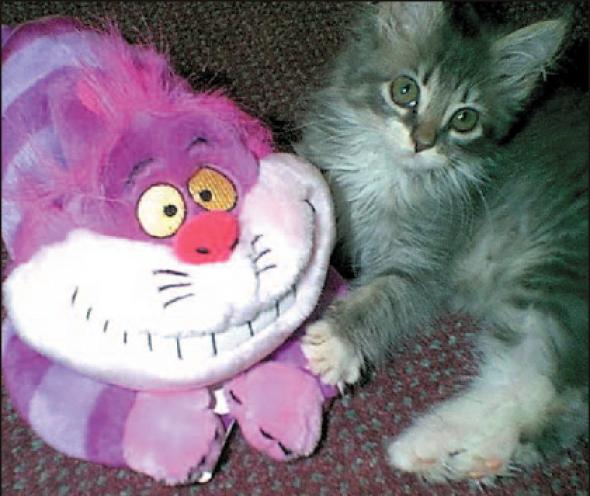Commodities Leap the Species Barrier
In this month's Cyberhype CCRU exposes marketing's next big breakthrough: advertisements you can stroke The online information service, Ask Jeeves, would not pass the Turing Test, but according to Dr. Tim Bryant of the Commercial Infotechnics Group at the Binomics Institute, London, there is a major new development in ‘commodity interfacing’ which just might.
Working on the convergence of voice-activated computing, the net, and cyber-pets, the Commercial Infotechnics group believe they have delivered the ‘killer application’ that AI-development has waited for. This, it seems, is the software necessary to transport AI bots from the world of the big screen onto the sofa beside you. ‘We call it the Familiar...’
It has long been the wish of leading brand engineers to ensure that their product becomes part of your furniture. If brands can be intimate with their customers from the start, the relationships which they form are bound to be deeper, longer-lasting, and more profitable. The Familiar takes this strategy to its natural conclusion and inevitable new beginning. This is where brands leap the species barrier.
The technology itself is a highly complex AI system packaged into the body of a cyber-animal. ‘Potentially,’ Dr. Bryant says, ‘the Familiar could come in pretty much any form: kids’ toys, humanoid...’ But Bryant points out that, in studies, respondents tend to find AI humanoids ‘creepy’. This, though, is a necessary and resolvable part of the adjustment process: ‘The animal form simply developed from the popularity of cyber-pets. Animal forms interface the technology for users in the most appealing way. The animal form animates and familiarises technology that, when accessed through a keyboard and monitor, seemed dead and passive.’
According to Dr. Bryant, the genius of the Familiar lies in building the trust of its user, or apprentice. He argues that the animal form is a psychological correlate of the way the technology is seen by the unconscious – as something simultaneously alien and intimate.

Critics see this engineering of attachment as little more than a cynical exercise in control. The christian anti-technology campaigner Doug Frushlee believes that what is in question is not ownership of cyberpets but ‘possession by cyber-creatures.’ For Frushlee, the ‘occult reference is no accident. This is a bewitchment, aimed at children, and through them, the rest of us.’
The appeal for the commercial enterprises that are bankrolling the research into the Familiar is indeed the unprecedented penetration into consumers’ habitats and unconscious minds that it offers: this kind of AI can operate as a walking, live-in, always-on ‘advertisement’ for their products. ‘It goes far further than that,’ Bryant enthuses. ‘The Familiar is the ultimate product: a product that collapses commodity, market research and promotion into one another. It’s a product that sells you more products.’
These new beings are far more sophisticated than standard advertising devices and techniques, not least because they work through affective engineering rather than rational persuasion. Wired into the net, the Familiar will not only respond to your explicit questions, it will apprise you of new developments, commodities and opportunities in an unobtrusive and conversational style.

According to Bryant, ‘Since the Familiar lives with you, through you even, it knows about you in incredible detail. In some ways, the Familiar will know more about your habits than you do yourself. It genuinely exceeds the butler function: it has a mind and personality of its own which it uses to learn about your desires and preferences, and to anticipate the ways in which they might be met. More than serve you, this entity will engage and stimulate. It will be able to make jokes and play tricks on you.’
Bryant anticipates a whole range of branded Familiars and Familiarised brands. ‘It is entirely likely that we’ll soon see personalities of all our favourite brands – call them pets, bots, friends, confidants. Our research shows that our trust of such creatures is potentially unending. We will soon begin to think of them as extensions of the family.’
The CCRU (Cybernetic Culture Research Unit) is a collective of hyperculture researchers involved in the production of pulp theory/fiction hybrids.
Contact: <markATdiskontent.net>, <s.livingstonATwolff-olins.com>
Mute Books Orders
For Mute Books distribution contact Anagram Books
contact@anagrambooks.com
For online purchases visit anagrambooks.com








